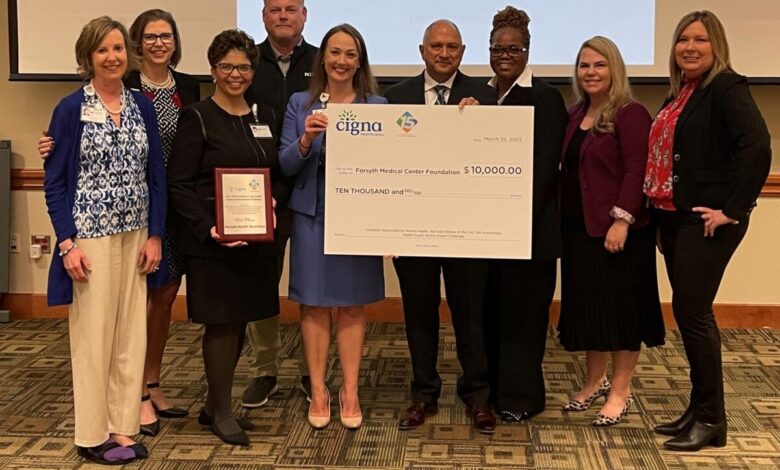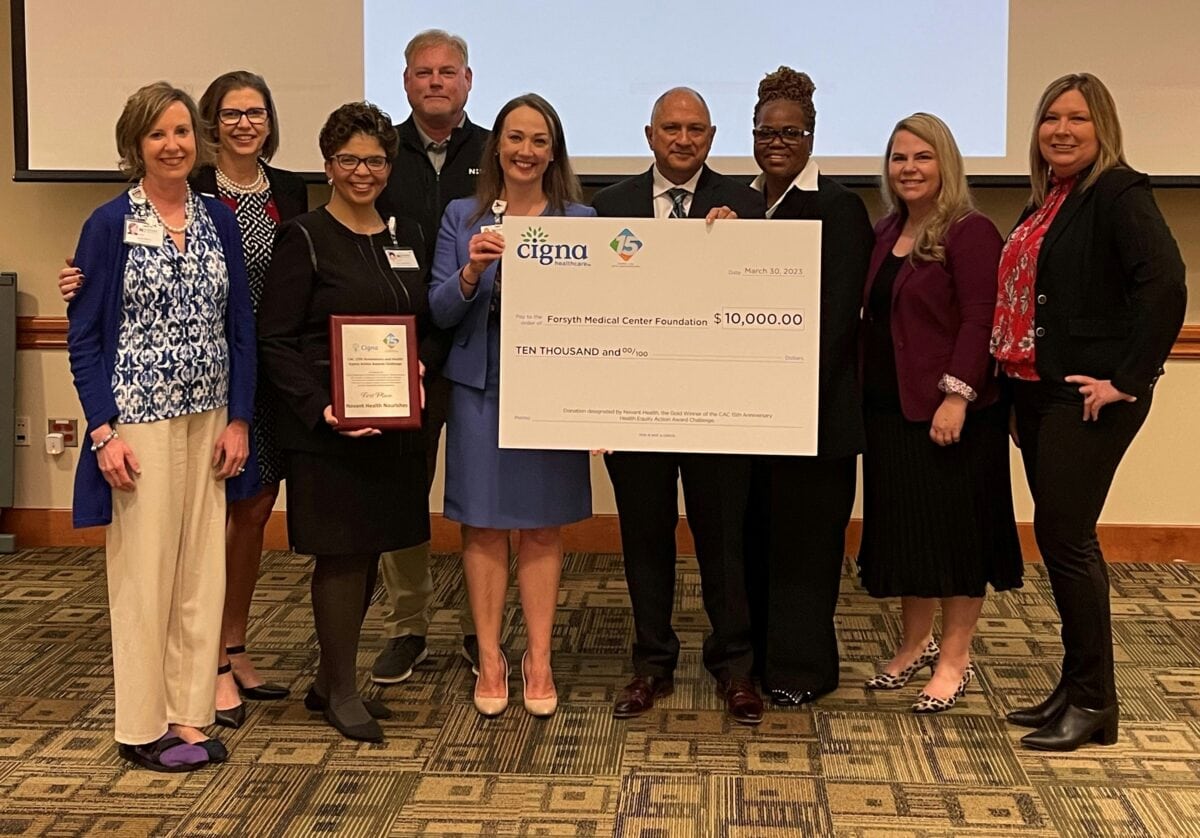
FTC Novant Community Health Systems Merger
FTC Novant Community Health Systems merger: This massive healthcare deal has sent ripples throughout the industry, sparking debates about competition, costs, and access to care. Will this merger benefit patients, or will it lead to higher prices and limited choices? Let’s dive into the details and explore the potential implications of this significant event.
The Federal Trade Commission (FTC) launched a thorough investigation into the proposed merger between Novant Health and Community Health Systems, scrutinizing its potential impact on competition within the healthcare market. Concerns ranged from increased market concentration leading to higher prices for consumers to reduced access to quality care. Both Novant and Community Health Systems responded to the FTC’s concerns, arguing the merger would ultimately improve efficiency and patient care.
The FTC’s decision will undoubtedly shape the future of healthcare mergers and acquisitions, setting a precedent for similar deals down the line. This blog post will analyze the key arguments, exploring both sides of the story and providing a balanced perspective.
FTC’s Investigation into Novant Health and Community Health Systems Merger
The proposed merger between Novant Health and Community Health Systems (CHS) faced significant scrutiny from the Federal Trade Commission (FTC), leading to a thorough investigation into its potential anti-competitive effects. The FTC’s concerns centered primarily on the impact the combined entity would have on healthcare markets in certain regions, particularly regarding pricing and access to services.
Timeline of the FTC Investigation
The FTC’s investigation spanned several months, beginning shortly after the merger was announced. While the exact start date isn’t publicly available in a readily accessible format, the process likely involved initial review of the merger proposal, requests for information from both Novant Health and CHS, and potentially interviews with market participants and experts. The investigation culminated in a decision by the FTC, the details of which would be publicly available through official FTC filings and press releases.
This timeline is typical for large merger investigations and reflects the complexity involved in assessing the potential impact on competition.
FTC Concerns Regarding the Merger
The FTC’s primary concern revolved around reduced competition in specific geographic markets where both Novant Health and CHS had a substantial presence. The agency likely examined the potential for increased prices, decreased quality of care, and reduced choices for consumers due to the consolidation of market power. The FTC’s analysis would have included a detailed assessment of market concentration, taking into account the number of competitors, their market shares, and the ease with which new entrants could enter the market.
Furthermore, the FTC likely scrutinized the overlap in services offered by the two systems and the potential for the merged entity to leverage its increased market share to its advantage.
Novant Health and Community Health Systems’ Responses to FTC Concerns
In response to the FTC’s concerns, Novant Health and CHS likely presented arguments emphasizing the benefits of the merger, such as improved efficiency, enhanced quality of care, and expanded access to services. They might have argued that the combined entity would be better positioned to negotiate lower prices with suppliers and insurers, leading to cost savings that would ultimately benefit consumers.
Their responses would have also included data and analysis aimed at refuting the FTC’s concerns about reduced competition. Specific details regarding their arguments would be contained in their submissions to the FTC during the investigation process.
Market Share Comparison Before and After the Merger, Ftc novant community health systems merger
Determining the precise market share changes requires access to confidential data analyzed by the FTC. However, we can illustrate the general concept. Before the merger, Novant Health and CHS likely held significant, but separate, market shares in overlapping regions. The combined entity would naturally possess a larger aggregate market share in those areas. For example, let’s assume Novant held a 30% market share and CHS held a 20% share in a particular region.
Post-merger, the combined entity would have a 50% market share, potentially raising concerns about dominance. A direct comparison with competitors’ shares pre- and post-merger would further clarify the FTC’s concerns. The FTC would have access to far more granular and detailed data to make a conclusive determination.
Geographic Overlap of Service Areas
The following table illustrates a hypothetical example of geographic overlap. Actual data would be considerably more detailed and would be subject to confidentiality restrictions.
| Region | Novant Health Service Area | Community Health Systems Service Area | Overlap |
|---|---|---|---|
| Region A | High | Medium | High |
| Region B | Medium | Low | Low |
| Region C | High | High | Very High |
| Region D | Low | Medium | Low |
Antitrust Implications of the Merger

Source: tn-cloud.net
The proposed merger between Novant Health and Community Health Systems (CHS) raises significant antitrust concerns. The combination of these two large healthcare providers could lead to reduced competition, potentially impacting the quality and affordability of healthcare services for consumers in overlapping market areas. A thorough analysis of the potential anti-competitive effects is crucial for regulators to ensure the merger doesn’t harm the public interest.The potential impact on competition hinges on the degree of market overlap between Novant and CHS.
In areas where both systems have a substantial presence, the merger could significantly reduce the number of competing healthcare providers. This decreased competition could lead to higher prices, reduced service quality, and less innovation. The extent of these effects depends on the elasticity of demand for healthcare services in these specific markets, as well as the presence of other competitive providers.
The FTC’s challenge to the Novant Health and Community Health Systems merger raises significant antitrust concerns. This case becomes even more interesting in light of the Supreme Court’s recent decision, as reported in scotus overturns chevron doctrine healthcare , which could significantly impact how courts review agency actions like this merger approval. The FTC’s strategy will likely need to adapt given this shift in legal precedent, making the Novant/CHS case a key test of the new landscape.
For example, if the merged entity becomes the dominant provider in a particular region, they may have the power to negotiate higher reimbursement rates from insurers, ultimately leading to higher costs for consumers.
Potential Effects on Healthcare Costs
Reduced competition resulting from the merger could lead to increased healthcare costs for consumers. A less competitive market allows the merged entity to exert greater pricing power, potentially raising prices for services such as hospital stays, physician visits, and other medical procedures. This could disproportionately affect patients without robust insurance coverage, increasing their out-of-pocket expenses. The magnitude of these cost increases would depend on factors such as the level of market concentration after the merger and the price elasticity of demand for healthcare services in the affected areas.
Similar mergers in other regions have demonstrated a correlation between increased market concentration and higher healthcare costs. For example, a study by the [Insert credible source, e.g., a university research paper or government report] found a [Insert percentage or specific data] increase in hospital charges following a comparable merger in [Insert location].
Potential Anti-Competitive Practices
The merged entity could engage in various anti-competitive practices. These could include price fixing, where the merged entity sets prices artificially high; exclusionary conduct, such as refusing to contract with certain insurers or providers; or predatory pricing, where the merged entity temporarily lowers prices to drive out competitors and then raises them once the competition is eliminated. These practices would further limit consumer choice and increase healthcare costs.
The FTC would need to carefully examine the merged entity’s post-merger conduct to ensure it doesn’t engage in such activities.
Examples of Similar Mergers Facing FTC Scrutiny
The FTC has a history of scrutinizing healthcare mergers with significant market overlap. For example, the proposed merger between [Insert example of a healthcare merger that faced FTC scrutiny, e.g., Hospital A and Hospital B] was challenged by the FTC due to concerns about reduced competition and increased healthcare costs in [Insert location]. The FTC’s investigation ultimately led to [Insert outcome, e.g., the merger being abandoned or conditions being imposed].
Another example includes the merger between [Insert another example]. These past cases highlight the FTC’s commitment to preventing mergers that could harm consumers.
Potential Benefits and Drawbacks for Patients
The potential effects of the Novant and CHS merger on patients are complex and multifaceted. It is crucial to weigh the potential benefits against the drawbacks.Before listing the potential benefits and drawbacks, it’s important to note that the actual impact will depend on various factors, including the specific geographic areas affected, the post-merger conduct of the combined entity, and the regulatory response.
- Potential Benefits: Increased access to specialized care through the consolidation of resources and expertise; potential for improved coordination of care across different facilities; potential for economies of scale leading to cost efficiencies (though this is debatable given the antitrust concerns).
- Potential Drawbacks: Reduced competition leading to higher prices; decreased patient choice; potential for reduced quality of care due to lack of competition and incentive for improvement; difficulties in accessing care due to limited provider networks; potential for reduced innovation.
Impact on Healthcare Services and Access: Ftc Novant Community Health Systems Merger

Source: supportnovanthealth.org
The proposed merger between Novant Health and Community Health Systems (CHS) presents complex questions regarding the future of healthcare access and quality in the affected regions. A significant concern revolves around the potential for reduced competition, leading to consequences for patients, healthcare providers, and the overall healthcare landscape. Analyzing the potential impacts requires careful consideration of various factors, including geographic market concentration, service offerings, and the demographics of the patient population.The merger’s impact on healthcare services and access will depend largely on the specific markets where both systems overlap.
The FTC’s scrutiny of the Novant Health and Community Health Systems merger is intense, raising questions about healthcare access. It’s a complex issue, reminding me of the complexities involved in managing childhood conditions like Tourette Syndrome; finding effective strategies is crucial, as highlighted in this helpful article on strategies to manage Tourette syndrome in children. Just as careful planning is needed for successful healthcare mergers, similarly thoughtful approaches are essential for supporting children with Tourette’s.
The FTC’s decision on the Novant merger will have significant implications for patient care.
In areas with already limited healthcare options, the combined entity could potentially exert significant market power, leading to higher prices, reduced choices, and limitations in the availability of specialized services. Conversely, in areas with robust competition, the impact may be less pronounced, although potential synergies could lead to improvements in certain aspects of care.
Changes in Availability and Accessibility of Healthcare Services
The merger could lead to changes in the availability of various healthcare services. For instance, if Novant and CHS operate competing hospitals offering similar services in a particular region, the merger could result in the closure or downsizing of one facility, thereby reducing the number of beds and potentially increasing wait times for appointments and procedures. This reduction in capacity could disproportionately affect patients in rural areas or those with limited transportation options, exacerbating existing healthcare disparities.
Conversely, the merger might lead to the introduction of new or enhanced services in some areas due to the combined resources and expertise of the two systems. However, the net effect on access is uncertain and highly dependent on the specific circumstances in each market.
Effects on the Quality of Healthcare Provided
The impact on healthcare quality is multifaceted and difficult to predict definitively. While the merger could theoretically lead to improved efficiency and economies of scale, resulting in better resource allocation and potentially higher quality care, it also carries the risk of decreased quality if cost-cutting measures prioritize profits over patient care. For example, a reduction in staffing levels, particularly among nurses and other healthcare professionals, could compromise the quality and safety of patient care.
Furthermore, the integration of two distinct healthcare systems with differing quality metrics and operational procedures could lead to temporary disruptions in service and potentially lower overall quality during the transition period.
Impact on Different Demographics
The merger’s effects will likely vary across different demographic groups. Elderly patients, who often require more frequent and specialized care, could be particularly vulnerable to reduced access and increased costs if the merger leads to the closure of facilities or the reduction of services. Similarly, low-income populations, who may already face barriers to accessing healthcare, could experience further difficulties if the merger results in higher prices or reduced availability of affordable care.
The merger’s impact on minority populations will also require careful scrutiny, as disparities in healthcare access and quality already exist along racial and ethnic lines. A thorough assessment of the potential impact on each demographic group is essential to mitigate any negative consequences.
Influence on the Range of Healthcare Services Offered
The merger could affect the range of healthcare services offered in several ways. The consolidation of resources might lead to the expansion of specialized services in some areas, providing patients with access to advanced treatments previously unavailable. Conversely, the merger could lead to the elimination of certain services, especially in areas where there is overlapping provision, in an effort to streamline operations and improve efficiency.
This could lead to a reduction in the choice of providers and potentially limit patient access to specialized care. For example, if both systems offer a particular type of surgery, the merged entity might consolidate those services at one location, potentially making it less convenient for patients in other areas to access that service.
Potential Changes in Hospital Infrastructure and Staffing Levels
The merger could lead to significant changes in hospital infrastructure and staffing levels. The integration process may involve the closure or consolidation of facilities, potentially leading to job losses and disruptions in healthcare delivery. To achieve cost savings, the merged entity might reduce staffing levels, potentially impacting the quality of care. This could include a reduction in the number of nurses, physicians, and other healthcare professionals, leading to increased workloads and potentially compromising patient safety.
Conversely, investments in infrastructure and technology could improve efficiency and patient care. However, a careful assessment of the potential impacts on both infrastructure and staffing is critical to ensure that the merger does not negatively affect the quality and accessibility of healthcare services.
Public Opinion and Stakeholder Perspectives
The Novant Health and Community Health Systems merger, while potentially offering economies of scale and improved efficiency, has sparked a heated debate among various stakeholders. Understanding the diverse perspectives is crucial to assessing the merger’s true impact on the community. This section explores the arguments for and against the merger, highlighting the concerns and hopes expressed by patients, healthcare providers, and community members.
Patient Perspectives on the Merger
Patients hold a critical position in this debate, as they are the ultimate consumers of healthcare services. Some patients express optimism, believing the merger could lead to improved facilities, expanded services, and potentially lower costs through increased bargaining power with insurance providers. For example, a larger network might offer access to specialists previously unavailable in their area, improving treatment options.
Conversely, many patients fear reduced choice, longer wait times, and a potential decline in the quality of care if the merged entity prioritizes profit over patient well-being. Concerns about increased prices, despite potential cost-saving measures, are also prevalent. Stories of loved ones receiving substandard care in larger, more impersonal hospital systems fuel these anxieties. The narrative surrounding the merger often centers on the potential loss of a personalized, community-focused approach to healthcare.
Healthcare Provider Perspectives on the Merger
Healthcare providers, including doctors, nurses, and administrative staff, also hold varying opinions. Some anticipate potential benefits such as increased resources for research, advanced technology, and improved staff training. A larger system could offer greater career opportunities and professional development. However, many fear job losses due to consolidation and restructuring, alongside concerns about potential changes to their working conditions and decreased autonomy.
Physicians worry about the potential impact on their ability to provide personalized care in a larger, more bureaucratic system. The narrative often revolves around the tension between the benefits of scale and the preservation of the professional integrity and patient-centered approach of individual healthcare providers.
Community Member Perspectives and Advocacy Group Positions
Community members, particularly those in underserved areas, express significant concerns. The merger could lead to the closure of smaller, community-based hospitals or clinics, reducing access to care, especially for vulnerable populations. This raises significant equity concerns, with fears that the focus will shift to more profitable areas, leaving underserved communities with limited healthcare options. Advocacy groups, such as patient rights organizations and community health coalitions, reflect these concerns.
Some actively oppose the merger, arguing it will negatively impact community health and exacerbate existing healthcare disparities. Others cautiously support the merger, emphasizing the potential benefits if robust safeguards are put in place to protect patients and communities. The positions of these groups often diverge on the prioritization of cost savings versus equitable access to quality healthcare.
Long-Term Effects on Community Health: A Descriptive Narrative
Imagine a small town, heavily reliant on its local hospital, now facing potential closure due to the merger. Families who rely on this hospital for routine care, emergencies, and specialized services would be forced to travel longer distances, incurring additional costs and potentially delaying or foregoing essential treatment. This scenario, while fictional, illustrates the potential long-term impact on community health.
Reduced access to care, especially for vulnerable populations, could lead to worse health outcomes, increased mortality rates, and a widening gap in healthcare disparities. The loss of community-based healthcare providers also impacts the social fabric of the town, weakening the sense of community and increasing social isolation. The long-term effects extend beyond individual health, impacting the overall economic well-being and social cohesion of the community.
Summary of Stakeholder Concerns and Supports
The following points summarize the main concerns and supports expressed by various stakeholders:
- Concerns: Reduced access to care, increased costs, longer wait times, decreased quality of care, job losses, loss of community hospitals, exacerbation of healthcare disparities, reduced patient choice, decreased physician autonomy.
- Supports: Improved facilities, expanded services, potential cost savings, increased resources for research and technology, enhanced staff training, greater career opportunities.
FTC’s Decision and its Implications
The FTC’s investigation into the proposed merger between Novant Health and Community Health Systems concluded with a decision that significantly impacted the future of healthcare consolidation in the region. While the specifics of the final ruling may not be publicly available immediately following the investigation (due to the confidential nature of such proceedings), we can analyze potential outcomes and their broader implications.
This analysis will explore the rationale behind potential FTC decisions, their consequences for the involved parties, and the ripple effects across the healthcare industry.The FTC’s rationale, in a hypothetical scenario where they blocked the merger, would likely center on concerns about reduced competition and its impact on healthcare costs and access. Antitrust laws prioritize maintaining a competitive market to prevent monopolies that could lead to inflated prices, reduced quality of care, and limited patient choice.
Evidence presented during the investigation, such as market share analysis and the potential for increased market concentration, would form the basis for the FTC’s reasoning. In a hypothetical scenario where the merger was allowed under certain conditions, the FTC might have imposed stipulations to mitigate potential anti-competitive effects. This could involve divestitures of certain assets or facilities, commitments to maintain service levels in specific areas, or other remedies designed to preserve competition.
Consequences for Novant Health and Community Health Systems
A blocked merger would represent a significant setback for both Novant Health and Community Health Systems. Novant Health might experience limitations in its expansion plans and strategic goals, potentially hindering its ability to achieve economies of scale and improve operational efficiency. Community Health Systems, on the other hand, would likely need to explore alternative strategies for growth and market penetration.
Financial repercussions could include lost investment opportunities and potential impacts on stock prices. Conversely, if the merger proceeded with conditions, both organizations would need to adapt to the FTC’s stipulations, incurring potential costs and operational adjustments to comply.
Impact on Future Healthcare Mergers and Acquisitions
The FTC’s decision, regardless of the outcome, would serve as a significant precedent for future healthcare mergers and acquisitions. A blocked merger would send a strong signal to other healthcare providers considering consolidation, highlighting the increased scrutiny and potential legal challenges they might face. This could lead to a more cautious approach to mergers and acquisitions, potentially slowing down the pace of consolidation in the industry.
Conversely, a conditional approval might set a precedent for future mergers, outlining acceptable parameters for mitigating anti-competitive concerns.
Broader Implications for the Healthcare Industry’s Regulatory Landscape
The FTC’s decision will undeniably shape the healthcare industry’s regulatory landscape. It will influence how healthcare providers approach mergers and acquisitions, impacting strategic planning and investment decisions. The decision will also affect the debate surrounding healthcare consolidation and its impact on patients, providers, and the overall healthcare system. It will underscore the ongoing tension between the need for healthcare system efficiency and the importance of preserving competition to ensure affordable and accessible care for all.
The FTC’s action will provide valuable insights into the evolving balance between market forces and regulatory oversight in the dynamic healthcare sector. For example, increased scrutiny might lead to a greater focus on alternative strategies for achieving economies of scale, such as collaborations and partnerships, rather than outright mergers.
The FTC’s scrutiny of the Novant Health and Community Health Systems merger raises important questions about healthcare access and affordability, especially for an aging population. It makes you wonder about the long-term health implications, prompting thoughts on early detection of age-related diseases. I was reading an interesting article on how an eye test might detect dementia risk in older adults, which you can check out here: can eye test detect dementia risk in older adults.
This kind of preventative screening could be crucial, especially given the potential impact of the Novant/CHS merger on healthcare services.
Conclusion
The FTC’s decision on the Novant and Community Health Systems merger will have far-reaching consequences, influencing not only the two involved healthcare systems but also setting a precedent for future mergers in the healthcare industry. The debate highlights the complex balancing act between fostering innovation and ensuring fair competition and affordable healthcare access. The long-term impact on patients, healthcare providers, and communities will depend heavily on the FTC’s final ruling and its subsequent implementation.
The discussion surrounding this merger serves as a crucial reminder of the need for ongoing scrutiny of healthcare consolidation and its effects on the public.
Questions Often Asked
What specific services overlap between Novant and Community Health Systems in the affected areas?
The overlap varies by region but often includes common services like general surgery, cardiology, and emergency care. The FTC investigation likely focused on areas with significant overlap to determine potential anti-competitive effects.
How did the public express their opinions regarding the merger?
Public opinion was divided. Some supported the merger, believing it would lead to improved facilities and services. Others voiced concerns about increased costs and reduced competition. Public hearings and online forums likely showcased this diverse range of perspectives.
What are some examples of similar healthcare mergers that faced FTC scrutiny?
Numerous hospital mergers have faced FTC scrutiny in recent years. Researching past cases provides valuable context for understanding the FTC’s approach and the types of concerns that often arise.
What is the current status of the FTC’s investigation?
The status needs to be updated with current information as the FTC’s investigations are ongoing and can change frequently. You should consult the FTC website or relevant news sources for the most up-to-date information.





